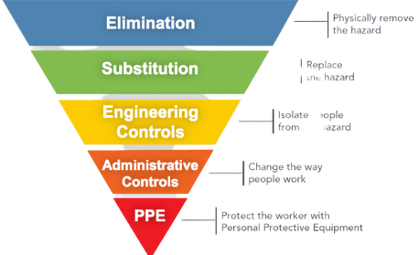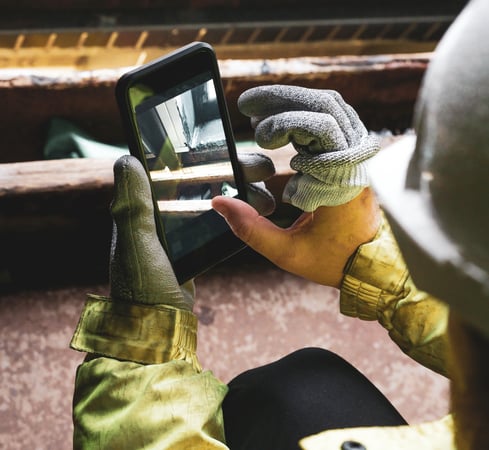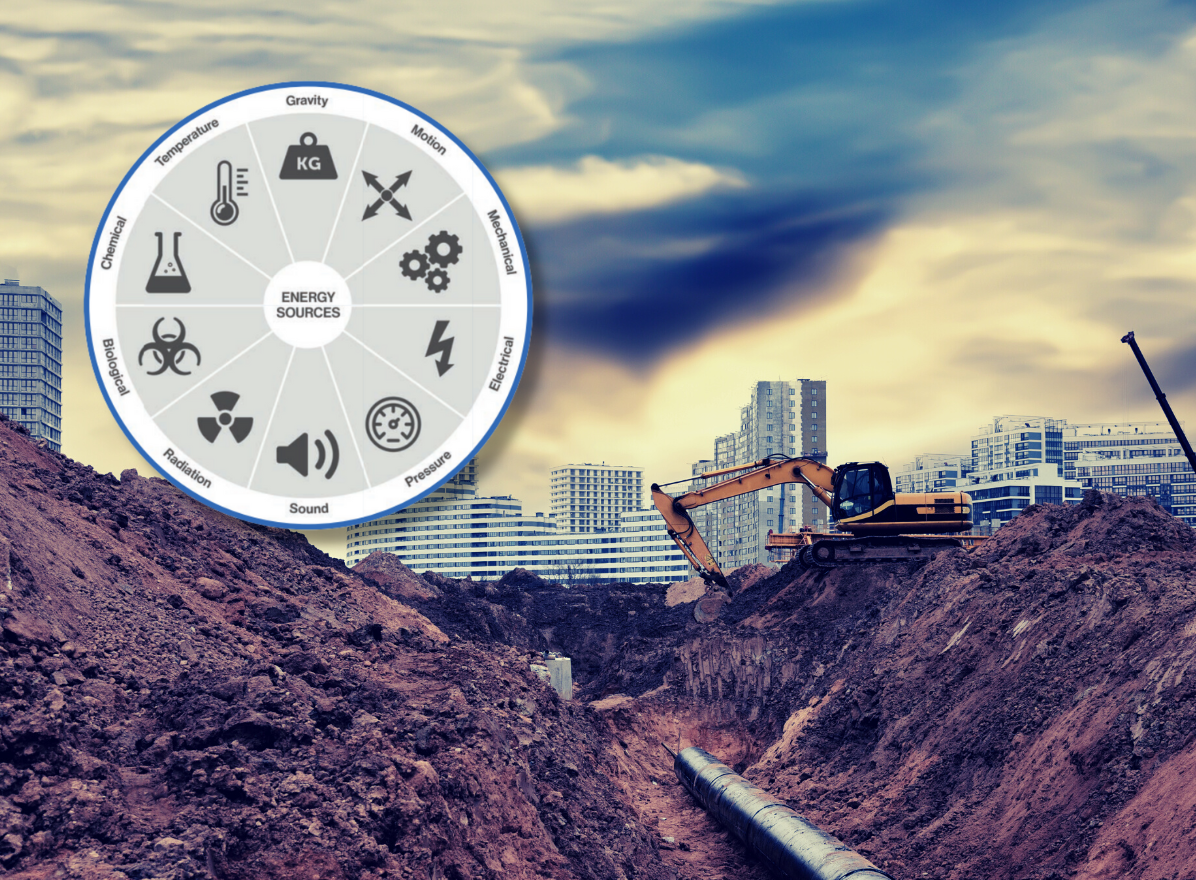A proactive approach to safety shows your workers and the public that your company puts people’s welfare above all else. But, how does it work? How do companies take the steps to be proactive? And, what does “proactive safety” really mean in the first place?
To find out, Urbint recently hosted a fireside chat with two of the nation’s leading safety experts — Nick Stavropoulos, former COO of PG&E and National Grid U.S., and Emily Whitcomb, director of Work to Zero at the National Safety Council. Urbint’s own SVP of Strategic Accounts and Partnerships Dr. Lindsay Jenkins moderated.
Here’s a rundown of the top points from their conversation for fostering a proactive safety culture at utilities.
7 Takeaways for Building a Proactive Safety Culture
1. ‘Speak up’ — but also ‘listen up’ and ‘follow up’
It’s common for companies who handle high-risk jobs to encourage a “speak up” culture. But, employees speaking up is only one part of the equation.
.png?width=352&name=Taking%20a%20Proactive%20Approach%20to%20Safety%20Improving%20Outcomes%20Through%20Culture%20and%20Technology%20(1).png) Urbint hosted safety experts Nick Stavropoulos and Emily Whitcomb at a proactive safety webinar on July 29. Watch the video here.
Urbint hosted safety experts Nick Stavropoulos and Emily Whitcomb at a proactive safety webinar on July 29. Watch the video here.“Words only take you so far,” says Stavropoulos. “They have a ‘speak up’ culture, but are they listening up and are they following up? A lot of leaders ask people to report problems and issues, but then they don't do anything with them and then it floats away.”
He stresses the importance of management leading safety initiatives and providing appropriate resources to safety programs, ensuring a “speak up” culture is a two-way street.
Employee safety doesn’t stop at the end of a shift, either. “Fatigue was a contributing factor in all of the top hazardous situations in which workers were dying,” says Whitcomb.
“We really suggest that organizations look at their management systems, look at their operations to look for risky shifts — long hours, not a lot of rest between shifts, demanding work.”
Companies with top-performing safety programs may take a holistic view of their workers’ safety and go even further to assure they can arrive fit-for-duty. Jenkins pointed to a case in which a safety manager in a remote area discovered workers were fatigued during the day because they were spending their downtime doing laundry.
“The company actually took the responsibility of getting clothes washed … and it actually had a marked improvement on their safety outcomes,” says Jenkins.
Key Suggestions:
- Encourage workers to ‘speak up’ — and management to ‘listen up’ and ‘follow up.’
- Engage with workers about their issues — both on and off the job.
2. Prioritize supporting your frontline workers
Safety-driven companies often want to dive in with new initiatives and technologies to innovate their safety programs. But, it’s essential that management consider how any changes will affect their frontline workers.
“Supervisors have so much administrative bulls**t put on them that they can’t get out in the field,” says Stavropoulos. “... Every sort of initiative that people dream up within the organization falls on the shoulders of these first-line supervisors. It’s probably the most challenging job in the company.”
He stresses that any safety initiative needs to make these workers’ lives easier in order to be successful. Whitcomb agrees: “Make sure that they are engaged in some of the decisions that are being made at higher levels, especially if it involves their sites or impacts them in some way,” she says.
One way to engage frontline workers is by granting them stop-work authority. But, Stavropoulos advocates going even further.
“It’s really hard to stop a job once it’s already in process,” he says. “A different approach that I’m seeing at many companies these days is ‘start work’ authority. So, for those high-hazard activities, there’s a clear set of expectations about what has to be in place before we start the job.
“It’s a lot easier for a low-level employee or new employee to say to the supervisor … ‘Wait a minute, we don’t have these five things, we’re missing something, we can’t start this job.’ To me, that’s a better conversation and a much higher probability that people are going to speak up.”
Companies may even see safety improvements from low-tech solutions, provided they meet the needs of their field staff.
“On a really basic level, we have found success with safety suggestion boxes that are anonymous, where you can submit an anonymous note about a potential hazard without feeling like there is any sort of repercussion for it,” says Whitcomb.
Key Suggestions:
- Connect with workers early to secure buy-in for safety innovations.
- Give workers start-work authority, not just stop-work authority.
- Simple solutions (e.g., suggestion boxes) can have outsized improvements on safety.
3. SIFs matter more than other injuries
Not all injuries are created equal, and utilities now recognize it. Companies are now moving their safety programs away from total injury prevention toward a focus on reducing serious injuries and fatalities (SIFs).
 The NIOSH Hierarchy of Controls sets out ordered recommendations — from most to least effective — for controls to keep workers safe on the job.
The NIOSH Hierarchy of Controls sets out ordered recommendations — from most to least effective — for controls to keep workers safe on the job.“There's a lot of things we've done over the past 25 years to really drive down our injury rate, but it hasn’t quite had the same effect on our fatalities,” says Whitcomb. “So, we’re really pushing our EH&S leaders to think about proactive approaches to addressing those fatalities.”
Going back to the National Institute for Occupational Safety and Health (NIOSH) Hierarchy of Controls is a great start. Advances in technology now allow safety managers to move tasks up the pyramid to keep workers safer.
“A really good example of that is aerial inspections or confined-space entry inspections: Can we use drones instead of just making it safer for the worker to go into that hazardous situation?” says Whitcomb.
Stavropoulous concurs: “At the end of the day, what we really want to focus our finite resources on are those things that can seriously injure people or kill them. …
“A great company in this space is Quanta. Quanta has really developed a focus on these high-hazard events and they call them STICKY — Stuff That Can Kill You.”
By focusing attention and safety resources on the 10 or 12 high-risk activities instead of the full gamut of tasks performed by field workers, utilities can reduce life-altering injuries and ensure that, if an event occurs, it fails safely.
Key Suggestions:
- Prioritize SIFs over total injury prevention.
- Review the NIOSH Hierarchy for Controls for opportunities to eliminate or substitute interactions with hazards.
- Strategize to ensure high-risk activities fail safely.
4. ‘Leave the Naughty List to Santa Claus’
A core element of a proactive safety culture is keeping it non-punitive.
“The last thing you want to do is just show up with a checklist or, even worse, a Naughty List of things you’re doing wrong,” says Jenkins.
Stavropoulos has made non-punitive safety reporting a calling card throughout his career.
“We need to start from the premise that the overwhelming majority of people don’t come to work saying, ‘Hey, I want to make a mistake. I’m going to violate the rules. I’m going to get myself injured or mess up this job.’
“But we’re also human. Humans are going to make mistakes. We know that.”
Keeping a safety program effective requires building trust all the way through the organization. Workers must feel secure they can report safety violations without getting in trouble.
“I’ll give you an example,” he says. “[Our culture] was really to look at the worker and penalize them in some way — suspend them, terminate them, a letter to the file, that sort of thing. We really wanted to go to a non-punitive self-reporting culture. It takes a lot of work to create that change, because the trust was broken between the worker and senior leadership.
“We used to do a daily operations call in the morning with the top 50 leaders and there’d always be a safety moment and component of that. A worker called in … that the day before they used a backhoe and hit a steel main — didn’t rupture the pipe, but badly damaged the coating on the pipeline. Amazing, right? …
“But the best part about it was the supervisor for that job then said, ‘While I appreciate my worker reporting this, it was my fault because I was putting too much time-pressure on these guys. There’s no way they could have done it by hand digging, so I forced them because I put performance over safety.’
“So, to have that supervisor come and self-acknowledge that, I knew we had turned a corner,” says Stavropoulos.
Key Suggestions:
- Stop penalizing workers for reporting safety violations.
- Emphasize that management will not punish good-faith safety reporting.
5. Performance and safety go hand-in-hand
Companies may hold a preconceived notion that operating safely conflicts with operating efficiently. But Whitcomb says the facts don’t support that idea. Instead, evidence shows that taking the steps to work in a safe manner is best for the business as a whole — for worker safety and the bottom line.
“We found that implementing technology for these high-risk tasks not only decreases injuries and fatalities — which is what we're concerned about, right — but it also leads to lower medical costs, a reduction in claims and fines,” she says.
“We actually recently released some investment calculators that can show a company how much they could save just by implementing technology controls.
“What we have found is that doing business as usual can actually be more costly over time than making an investment in your EH&S program.”
Key Suggestions:
- Understand that working safely is part of high performance.
- Calculate the value of implementing technology controls for hazards.
6. The right technology can make the difference
The expansion of new technologies in recent years has created a world of opportunities for utility safety programs. Data analytics, machine learning, and advanced robotics all now enhance safety for workers as they go about their jobs.
 Corrective action programs that make it easy for workers to report safety issues, such as by using their personal devices, have greater engagement, according to Stavropoulos.
Corrective action programs that make it easy for workers to report safety issues, such as by using their personal devices, have greater engagement, according to Stavropoulos.“One of the key things is starting with an easy-to-use corrective action program — something that's based upon your iPhone or iPad, where every worker can easily report issues that they see in the field,” says Stavropoulos.
“But now you have the challenge of all these data that are coming in to the organization and how do you … make sure that you're seeing the forest for the trees.
“Technology can really help with that, whether it be artificial intelligence or machine learning,” he adds. “...Urbint is a great example of this — all these different data sets that identify the jobs that are happening that day that have the highest probability of risk.”
Whitcomb points out how important it is for management to consider the big picture before implementing a new solution.
“We don’t want to just go out and get a technology because it would be really fun to play with drones while at work,” she says. “We want to think about what those top risks are.”
She urges that technology controls should be related to the hazards typically encountered at work — drones for aerial inspections or confined spaces, proximity sensors, digital gas monitors, etc.
She also stresses that companies pay attention to digital readiness before implementing new technologies. “You can’t just go and adopt a drone and now you have an effective drone program,” she says. “You need to make sure that your company is ready to innovate.
“...I have heard that companies get so excited about adopting new technologies that they do too much. … Three, four, five different technologies in just a couple of years.” She notes that these scenarios typically result in poor outcomes due to the lack of digital readiness.
“[It’s important to] make sure that you’re investing in the mindset, the toolset, and the skillset of your people in your organization as you’re going into these types of things, as you’re innovating your safety practices.”
Key Suggestions:
- Use the right safety technology for your specific set of hazards.
- Make sure your organization is ready for each new solution.
7. Continuous improvement never stops
Of course, a strong and proactive safety culture is grounded in an ethos of continuous improvement. But not all organizations recognize the need to keep safety front of mind over the long term.
“I was asked recently by a senior executive that’s implementing a safety management system, ‘When is this going to be done? When are we going to be finished with this?’” says Stavropoulos.
“And, I had to look them in the eye and say ‘You’re never going to be done.’ This is something that you have to deal with on a constant basis.
Whitcomb agrees: “We’ve actually heard some lessons learned from some of our companies that have implemented technologies. They put it in place and then, sometimes, they end up walking away from it and forgetting about that continuous improvement. So, we actually built continuous improvement concepts into our pilot implementation roadmap as being the last step of the Plan-Do-Check-Act to make sure that you’re collecting that data, that you’re looking at the trends, that you’re always trying to reinforce and make that better.”
“Everything wants to go to chaos over time,” says Stavropoulous. “Without leadership within an organization — strong, effective leadership — almost immediately an organization starts to crumble.
“Your job’s never done. Never.”
Key Suggestions:
- Build continuous improvement for safety into your planning and review cycles.
- Never stop making safety your top priority.
***
Want to learn more about ways to foster a proactive safety culture in the utilities? Watch the full webinar: Taking a Proactive Approach to Safety: Improving Outcomes Through Technology and Safety.

.png)